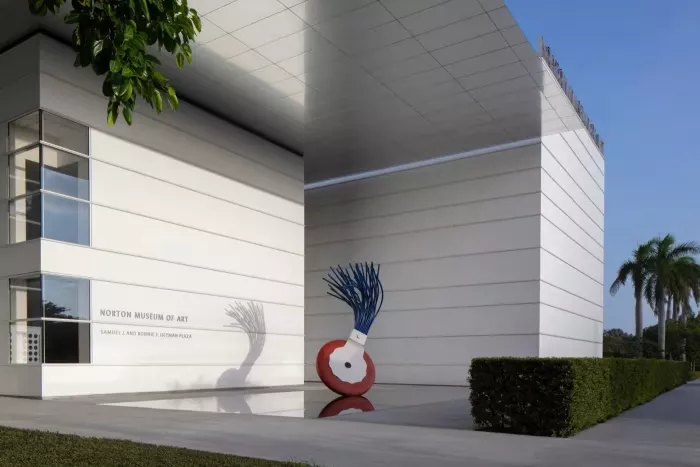A new exhibition at the Norton Museum of Art in West Palm Beach, Florida, is set to shine a light on the often-overlooked world of artists’ jewellery. For the first time, jewellery created by leading modern and contemporary artists will be displayed alongside their paintings and sculptures.
The exhibition, titled Artists’ Jewelry: From Cubism to Pop – The Diane Venet Collection, will run from April 12 to October 5. It will feature about 190 pieces of jewellery made by artists, shown together with 59 paintings, sculptures, and other artworks from the museum’s collection. The show will also include five promised gifts. Featured artists include Roy Lichtenstein, Man Ray, Georges Braque, and Louise Nevelson.
The collection comes from French collector Diane Venet, who has spent decades gathering artists’ jewellery. Her passion began in 1985 when sculptor Bernar Venet, now her husband, proposed by slipping a twisted silver bar onto her finger. Over the years, she received more jewellery made by her husband’s artist friends. This inspired her to start collecting on her own. Today, she owns pieces dating from the 1930s up to the present day — and she regularly wears them.
J. Rachel Gustafson, the museum’s chief curatorial operations and research officer, hopes the exhibition will encourage visitors and scholars to view artists’ jewellery as an essential part of their creative output. She notes that jewellery is often missing from art history courses. “Maybe less omission and more inclusion of the full range of artists’ creativity — that would be a success,” Gustafson says.
Venet says her favourite pieces are the ones personally made for her by artist friends, including Robert Rauschenberg and Frank Stella. “The close relationship between me and the artist is very important because it gives the idea that it’s sentimental,” she says. “I’m not a gallerist — I never sell, I collect out of love.”
She explains that while most artworks are created for sale, artist-made jewellery often comes from friendship or affection. Gustafson adds that some female artists even made jewellery for themselves, adding another layer of personal meaning.
Venet also points out that many artists only turn to jewellery later in their careers, as they enjoy the challenge of working on a smaller scale. “Making a piece of jewellery is not simply doing in miniature what they do on a larger scale,” she says. Not all artists succeed in mastering the special skills jewellery-making requires.
Among the highlights of the exhibition is Pablo Picasso’s 23-carat gold pendant Le Grand Faune (1973), made in collaboration with French goldsmith François Hugo. The show will also feature two Picasso brooches, two earthenware vessels with painted faces from the 1950s, and his 1956 painting L’Atelier (The Workshop). Gustafson notes that visitors will notice similar visual motifs across these works. “You will see the faces or the eyes of the figures both on the medallion and on the vessels,” she says. “It’s a really nice combination to show how these artists’ gestures and styles cross into different media.”
Related topics:
- LVMH Appoints Bulgari CEO Jean-Christophe Babin to Lead Watches Division
- Trump’s Tariffs Pose Threat to India’s Diamond and Jewelry Exports
- K. Hollis Jewelers Marks 20 Years with Anniversary Celebration


